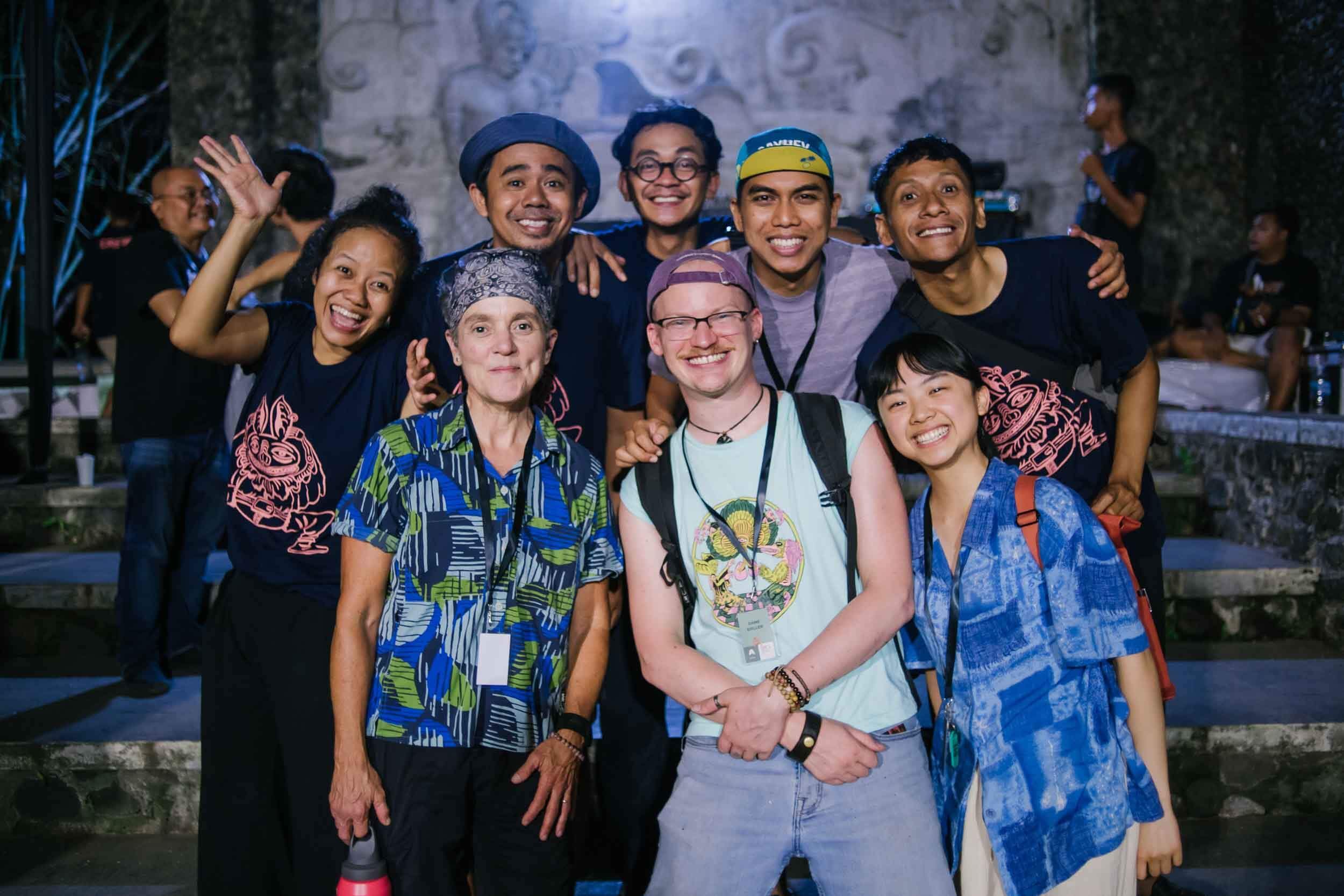Seeds of Inspiration
During the first month of my residency with Papermoon Puppet Theatre, Papermoon hosted their biennial international puppet festival: Pesta Boneka #9: Seeds of Hope. For those who read my last post, you’ll know this was a complete surprise for me! This year’s pesta was their biggest one yet: featuring 120 artists from 25 countries. It was truly an all you can eat buffet of puppetry, object manipulation and mask.
As a resident artist, I had the privilege of accessing all that Pesta Boneka had to offer: shows, masterclasses, and workshops. This was the most puppetry I had seen in my life. Here are three of the biggest takeaways I got from Pesta Boneka #9: Seeds of Hope:
Relationship between puppeteer, the puppet and the stage
When watching performances, something that really stood out to me was the relationship between the puppeteer, puppet and the stage. It was magical to watch puppeteers move seamlessly between different performance modes (as outlined in Bright Ong’s masterclass): Puppeteer, Actor and Stage Manager. Some puppeteers used their own body as the set for their puppets to live in. While others blurred the line between puppet and puppeteer, lending body parts to their puppets - a hand or a leg. For my own project, it got me dreaming up possibilities for who I can be in the story, and the relationship I can build with my puppets.
Tom Lee shares with everyone the behind the scenes of his performance of ‘Tomte’
The world’s your suitcase
With the majority of artists coming from outside of Yogyakarta for the festival, Pesta Boneka was a masterclass in how to tour a puppet show internationally. Speaking with other artists I learnt of the headaches and the hacks for touring. It’s amazing what you can find in a suitcase! The thing is, if you want to tour internationally one day, the best time to start thinking about that is at the very beginning. Setting this limitation from the get-go forces you to think smarter about the design. In turn, it helps strip down your show to what is truly essential to the story. When making to tour, everything and everyone needs to be utilised to their fullest because anything that isn’t, is extra luggage.
A selfie with my friends from Lize Puppet Arts Colony, Taiwan
A kaupapa of friendship
I think what makes Pesta Boneka truly special is how Papermoon hosts its artists with a friendship-first approach. I especially loved the communal dining room, which meant that every meal was an opportunity to meet new people and share ideas. Overtime, you end up going to watch shows and attend classes with your new-found friends.
Papermoon’s ‘friendship-first’ approach to programming is one we can all aspire to. As the only Kiwi (#represent!) I was taken aback by the passion and friendship of the international puppet community. I think in Aotearoa there is so much we can learn from Papermoon about how they have grown the local puppetry ecosystem from the grassroots. If you came to Pesta Bonka #9, without any prior knowledge, you would not believe that this thriving puppetry community literally did not exist 18 years ago. But it’s thanks to Papermoon and their kaupapa of curiosity and friendship that has seen their artistic community and audiences, both locally and internationally, grow to what it is today.
A celebratory group photo at the closing night of Pesta Boneka with Papermoon and the resident artists
Overall, Pesta Boneka was a truly nourishing and inspiring experience. It planted seeds of hope and inspiration not only for my own project, but also what Aotearoa’s puppetry community could be one day. The only downside was that by the end, my head bursting to the brim with ideas. I now had the tricky task of sifting through and figuring out what would best serve the story I wanted to tell.
My residency with Papermoon Puppet Theatre was made possible with generous funding from Asia New Zealand Foundation’s Artist Practitioners Fund.




